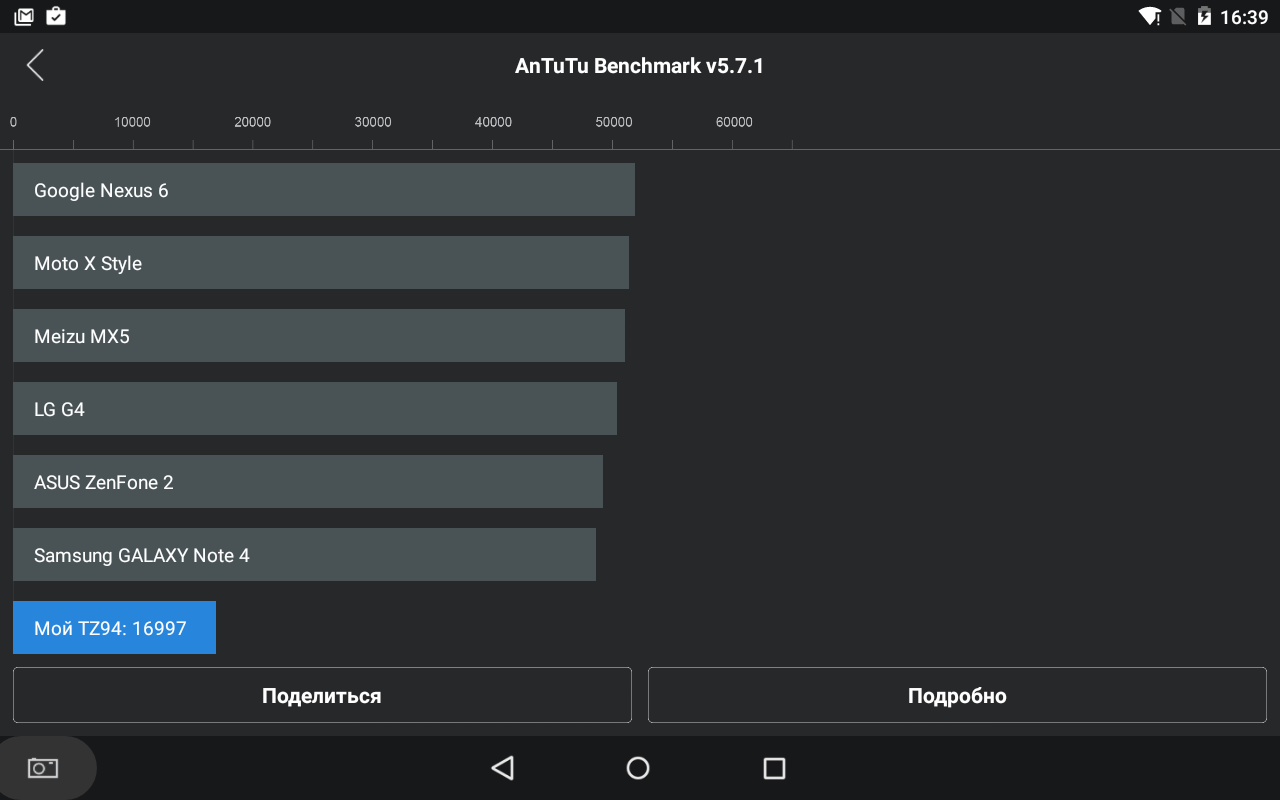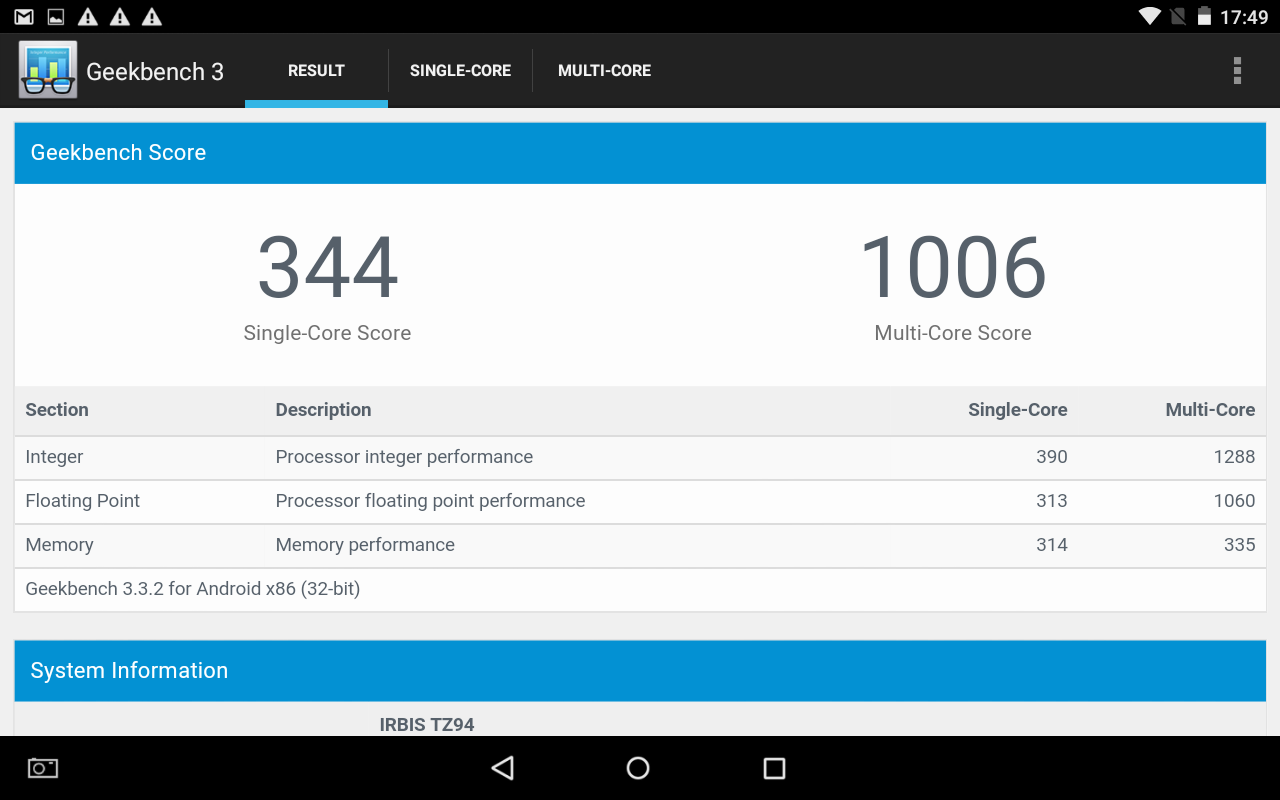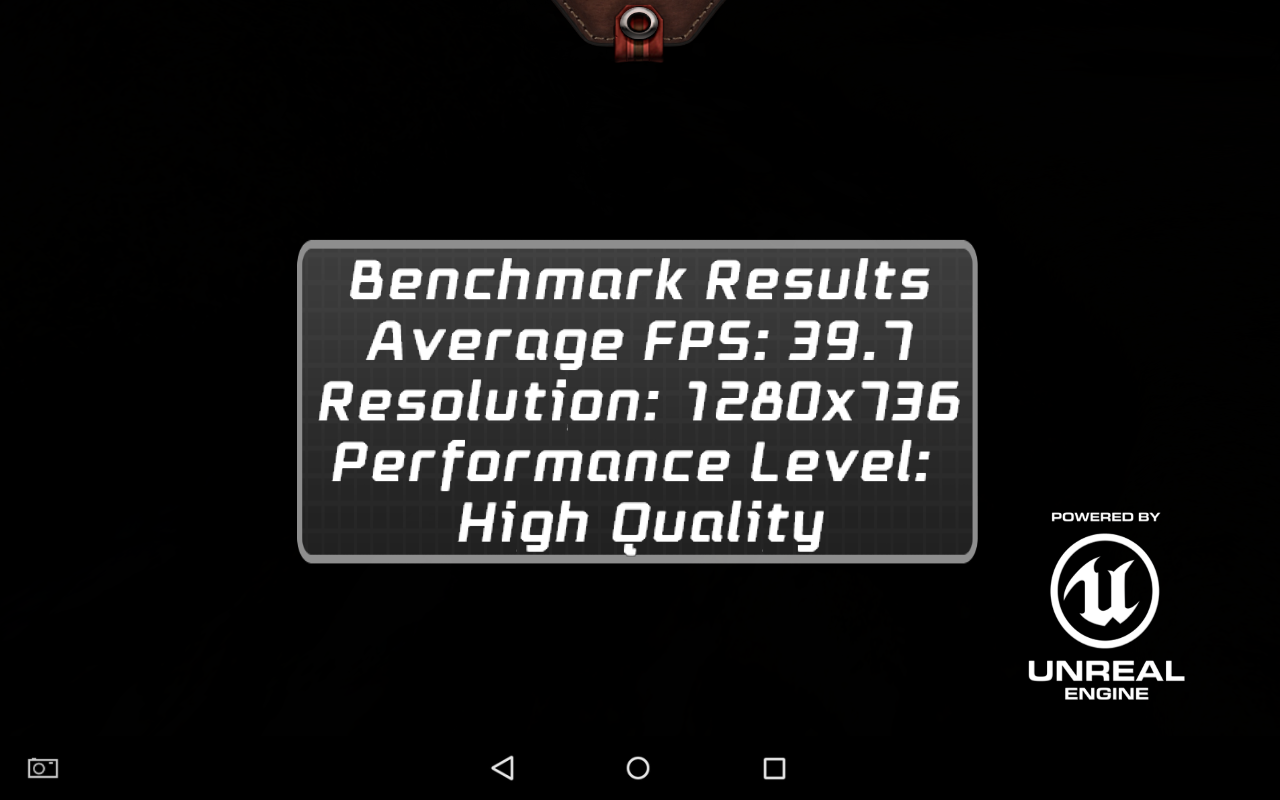Intel® Atom ™ X3 Features: The Irbis TZ94 Example
Hello! A full review of the Irbis TZ94 tablet on geektimes already exists, and in this review I would like to tell you what gives the consumer the use of Intel® Atom ™ X3-C3230RK chipset in inexpensive tablets. Previously, as it was: almost all low-cost “tablets” were completed with platforms with ARM processors from Asian manufacturers. Not that all of these platforms were bad, but there were problems with stability, with the work of navigation, and with many others.

And in this segment - the segment of low-cost tablets - comes Intel®. And with a number of solutions of the series X3, X5 and X7. The Irbis TZ94, as mentioned above, uses the Intel® Atom ™ X3-C3230RK chipset with a 4-core x86 processor (Intel® Silvermont) with a frequency of up to 1.1 GHz (other products may increase the frequency to 1.2 GHz) ARM Mali-450MP4 graphics and built-in 3G modem. The discrete solution from the same Intel® is responsible for the navigation, and depending on the specific device, it can only support GPS, or GPS and GLONASS. In the case of the Irbis TZ94, we have a GPS. By the way, there were no problems with it, which pleased me. Tired of low-cost tablets, which claimed GPS, but in practice it does not work.
If we talk about synthetic tests, then with a maximum frequency of 1.1 GHz, the Intel® Atom ™ X3-C3230RK in the Irbis TZ94 allows you to score about 17,000 points in AnTuTu. For understanding, I will say that a comparable (and even smaller) number of “parrots” give out inexpensive tablets with ARM chips that can accelerate to 1.3-1.5 GHz. Yes, sometimes they use weaker video accelerators than ARM Mali-450MP4, but the system on the chip should be considered as a complex. And it turns out that the Intel® Atom ™ X3-C3230RK is ahead - including thanks to the intelligent layout of the SoC and the selection of its components. As for the situation with games, I compared a 9.6-inch Irbis TZ94 and a 10.1-inch tablet on a chipset with a maximum frequency of ARM Cortex-A7 cores up to 1.3 GHz and Mali-400MP2 graphics - again, this is a typical solution for inexpensive tablets; So, in terms of graphics, the Irbis TZ94 left the competitor slightly behind (although it’s me so picky, and it’s not a fact that everyone will notice the difference), but on autonomous work I won for about half an hour. And this is despite the fact that the Irbis TZ94 has a battery of 4,000, and a 10.1-inch model has a capacity of 5,000. I mean, I was pleasantly surprised by the efficiency of the Intel® Atom ™ X3-C3230RK.
')
I will give a complete set of benchmarks:







Summing up this short post, I can say that a decent hardware solution has finally appeared for budget tablets. Which allows us to hope, at least, for a normal level of performance and normal operation of wireless modules. Well, it's also nice that the “bundled” with the Intel® Atom ™ X3-C3230RK is a fairly fresh version of Android - 5.1 Lollipop. Previously, in the case of buying an entry-level tablet, one could hope for a version of Android that was outdated for a couple of generations.
Intel Inside, Core, and Intel Atom ™ are trademarks of Intel Corporation in the United States and other countries.

And in this segment - the segment of low-cost tablets - comes Intel®. And with a number of solutions of the series X3, X5 and X7. The Irbis TZ94, as mentioned above, uses the Intel® Atom ™ X3-C3230RK chipset with a 4-core x86 processor (Intel® Silvermont) with a frequency of up to 1.1 GHz (other products may increase the frequency to 1.2 GHz) ARM Mali-450MP4 graphics and built-in 3G modem. The discrete solution from the same Intel® is responsible for the navigation, and depending on the specific device, it can only support GPS, or GPS and GLONASS. In the case of the Irbis TZ94, we have a GPS. By the way, there were no problems with it, which pleased me. Tired of low-cost tablets, which claimed GPS, but in practice it does not work.
If we talk about synthetic tests, then with a maximum frequency of 1.1 GHz, the Intel® Atom ™ X3-C3230RK in the Irbis TZ94 allows you to score about 17,000 points in AnTuTu. For understanding, I will say that a comparable (and even smaller) number of “parrots” give out inexpensive tablets with ARM chips that can accelerate to 1.3-1.5 GHz. Yes, sometimes they use weaker video accelerators than ARM Mali-450MP4, but the system on the chip should be considered as a complex. And it turns out that the Intel® Atom ™ X3-C3230RK is ahead - including thanks to the intelligent layout of the SoC and the selection of its components. As for the situation with games, I compared a 9.6-inch Irbis TZ94 and a 10.1-inch tablet on a chipset with a maximum frequency of ARM Cortex-A7 cores up to 1.3 GHz and Mali-400MP2 graphics - again, this is a typical solution for inexpensive tablets; So, in terms of graphics, the Irbis TZ94 left the competitor slightly behind (although it’s me so picky, and it’s not a fact that everyone will notice the difference), but on autonomous work I won for about half an hour. And this is despite the fact that the Irbis TZ94 has a battery of 4,000, and a 10.1-inch model has a capacity of 5,000. I mean, I was pleasantly surprised by the efficiency of the Intel® Atom ™ X3-C3230RK.
')
I will give a complete set of benchmarks:







Summing up this short post, I can say that a decent hardware solution has finally appeared for budget tablets. Which allows us to hope, at least, for a normal level of performance and normal operation of wireless modules. Well, it's also nice that the “bundled” with the Intel® Atom ™ X3-C3230RK is a fairly fresh version of Android - 5.1 Lollipop. Previously, in the case of buying an entry-level tablet, one could hope for a version of Android that was outdated for a couple of generations.
Intel Inside, Core, and Intel Atom ™ are trademarks of Intel Corporation in the United States and other countries.
Source: https://habr.com/ru/post/369305/
All Articles